ABRASIVE MATERIALS USED IN THE MANUFACTURE OF ABRASIVE TOOLS
Modern - hard and super-hard abrasives
At ANDRE ABRASIVE ARTICLES, modern hard and super-hard abrasives are used in the production of abrasive tools. Commonly used grains are aluminum oxide and silicon carbide in various varieties, while synthetic diamond and boron nitride are used for superhard tools.
Hard abrasive materials
Aluminum oxide (synthetic corundum) in different varieties is the most widely used abrasive material. It is melted in electric furnaces at temperatures above 2000°C from bauxite. Aluminum oxide (synthetic corundum) - αAl2O3.
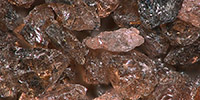
95A – Normal aluminium oxide (brown)
It is obtained from bauxite. It contains 95% Al2O3, ~3% titanium oxide (TiO2) and ~1-2% other admixtures. It is the most resistant synthetic corundum characterized by high ductility. Used for cutting-off and rough grinding of low-alloy steels, stainless steels, cast iron, especially when high rates of material removal are required.
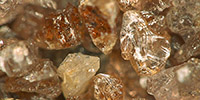
97A - Semifriable aluminium oxide
It is obtained from calcined bauxite and an alumina additive. Contains 97% Al2O3. It is characterized by medium hardness and strength. It is used for precision grinding and tool grinding.
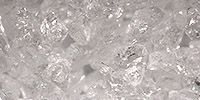
99A – Friable aluminium oxide (white)
It is obtained from pure aluminum oxide. It is the purest electrocorundum containing more than 99% Al2O3. It is characterized by high hardness and brittleness. Used for precision grinding, such as: plane grinding, cylindrical grinding, sharpening of cutting tools.
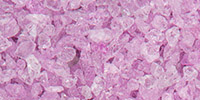
CrA – Chromium aluminium oxide oxide (pink)
It is obtained from aluminum oxide with the addition of chromium oxide up to several percent. It is characterized by high hardness and strength, greater than white fused alumina. Used for precision grinding of high-alloy steels, for sharpening of cutting tools.

M - Monocorundum
Obtained from high-purity aluminum oxide in an electric furnace. Contains over 99% Al2O3. It is characterized by high microhardness and mechanical strength. It has a unique self-sharpening ability. Used for grinding high-alloyed high-speed steels and for sharpening of tools. It is particularly suitable for complex profile grinding.
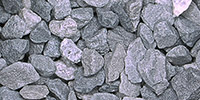
ZrA - Zirconia aluminium oxide
It is obtained from aluminum oxide or bauxite with the addition of zirconium oxide. It has the highest ductility and mechanical strength among all aluminium oxides. Used for high-performance grinding of cast iron, for grinding semi-finished steel parts with high pressures.

X - Microcrystalline alumina, sintered- ceramic electrocorundum
Microcrystalline alumina is obtained by sol-gel process and sintering. It is typically used as an additive to conventional grains at up to 50%, for precision grinding of hard steels. Also called ceramic electrocorundum in semi-flexible tools.
Silicon carbide (also called carborundum) - SiC is produced in resistance furnaces by synthesizing high-purity quartz sand and petroleum coke. In terms of hardness, it is second only to diamond.
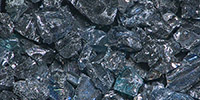
98C- Black silicon carbide
Contains min. 97.5% SiC and more admixtures than green silicon carbide. Used similarly to 99C for grinding sintered carbides, ceramic materials, concrete, stone, for rough grinding of castings made of hard and brittle white cast iron and for cutting-off through concrete, stone and white cast iron.
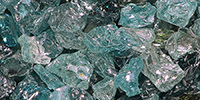
99C - Green silicon carbide
High-purity silicon carbide is green in color and contains min. 99% SiC. It is used for grinding carbides, ceramics, stones, for sharpening of cutting tools with sintered carbide inserts.
Grain sizes in accordance to FEPA standard 42-D-1984 and PN/M-59107W
|
MACRO GRAIN |
MICRO GRAIN |
||||
|
Marking of |
Grain size [mm] |
Marking of |
Grain size [mm] |
Marking of |
Grain size [µm] |
|
F4 |
5,600 - 4,750 |
F36 |
0,600 - 0,500 |
F230 |
56,0 - 50,0 |
|
F5 |
4,750 - 4,000 |
F40 |
0,500 - 0,425 |
F240 |
46,5 - 42,5 |
|
F6 |
4,000 - 3,350 |
F46 |
0,425 - 0,355 |
F280 |
38,5 - 35,0 |
|
F7 |
3,350 - 2,800 |
F54 |
0,355 - 0,300 |
F320 |
30,7 - 27,7 |
|
F8 |
2,800 - 2,360 |
F60 |
0,300 - 0,250 |
F360 |
24,3 - 21,3 |
|
F10 |
2,360 - 2,000 |
F70 |
0,250 - 0,212 |
F400 |
18,3 - 16,3 |
|
F12 |
2,000 - 1,700 |
F80 |
0,212 - 0,180 |
F500 |
13,8 - 11,8 |
|
F14 |
1,700 - 1,400 |
F90 |
0,180 - 0,150 |
F600 |
10,3 - 8,3 |
|
F16 |
1,400 - 1,180 |
F100 |
0,150 - 0,125 |
F800 |
7,5 - 5,5 |
|
F20 |
1,180 - 1,000 |
F120 |
0,125 - 0,106 |
F1000 |
5,3 - 3,7 |
|
F22 |
1,000 - 0,850 |
F150 |
0,106 - 0,075 |
F1200 |
3,5 - 2,5 |
|
F24 |
0,850 - 0,710 |
F180 |
0,090 - 0,063 |
- |
- |
|
F30 |
0,710 - 0,600 |
F220 |
0,075 - 0,053 |
- |
- |
Superhard abrasives
ANDRE ABRASIVE ARTICLES also produces superhard abrasive tools. The diamond and cubic boron nitride (CBN) grains used in them have a much higher hardness compared to traditional abrasives such as alumina or silicon carbide.
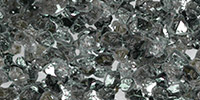
D - Synthetic diamond
Artificially obtained diamond, is the hardest known material. Mainly produced by the method - HTHP by subjecting graphite to very high temperatures and pressures. In terms of its most important features, it resembles a natural diamond. It is characterized by high wear resistance and thermal strength. Diamond is used for grinding: carbides, glass, ceramics, stone, plastics, graphite, cast iron. Due to diamond's reactivity with iron, it is not recommended for machining tools made of steel.
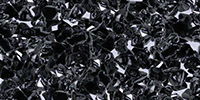
B - CBN (Cubic Boron Nitride) – also called Borazone
It is obtained by the same method as synthetic diamond. It has a lower hardness compared to diamond, the second hardest material, but much better heat resistance up to 1200˚C and does not chemically react with iron. It is used for grinding all kinds of steel, mainly above 50 HRC. Its market price is on average 30% higher than that of diamond.
Grain sizes in accordance to FEPA standard PN-85/M-59108 and ISO 6106
|
GRAIN SUPERHARD |
||||||
|
Diamond |
CBN |
Grain size [µm] |
||||
|
D181 |
B181 |
180 / 150 |
||||
|
D151 |
B151 |
150 / 125 |
||||
|
D126 |
B126 |
125 / 106 |
||||
|
D107 |
B107 |
106 / 90 |
||||
|
D91 |
B91 |
90 / 75 |
||||
|
D76 |
B76 |
75 / 63 |
||||
|
D64 |
B64 |
63 / 53 |
||||
|
D54 |
B54 |
53 / 45 |
||||
|
D46 |
B46 |
45 / 38 |
||||
Since the beginning of its activity, ANDRE company has been focusing on high quality of its products. At ANDRE, every effort is made to ensure that products meet customers' individual needs and satisfy their highest expectations even in the most difficult grinding operations.
Abrasive tools by ANDRE ABRASIVE ARTICLES are safe.
ANDRE gradually improves its technological process to offer abrasive tools with increasingly better usability and a high safety factor in accordance with the applicable standards. Membership in organizations of leading abrasive tool manufacturers and regular certification fully confirm that.







